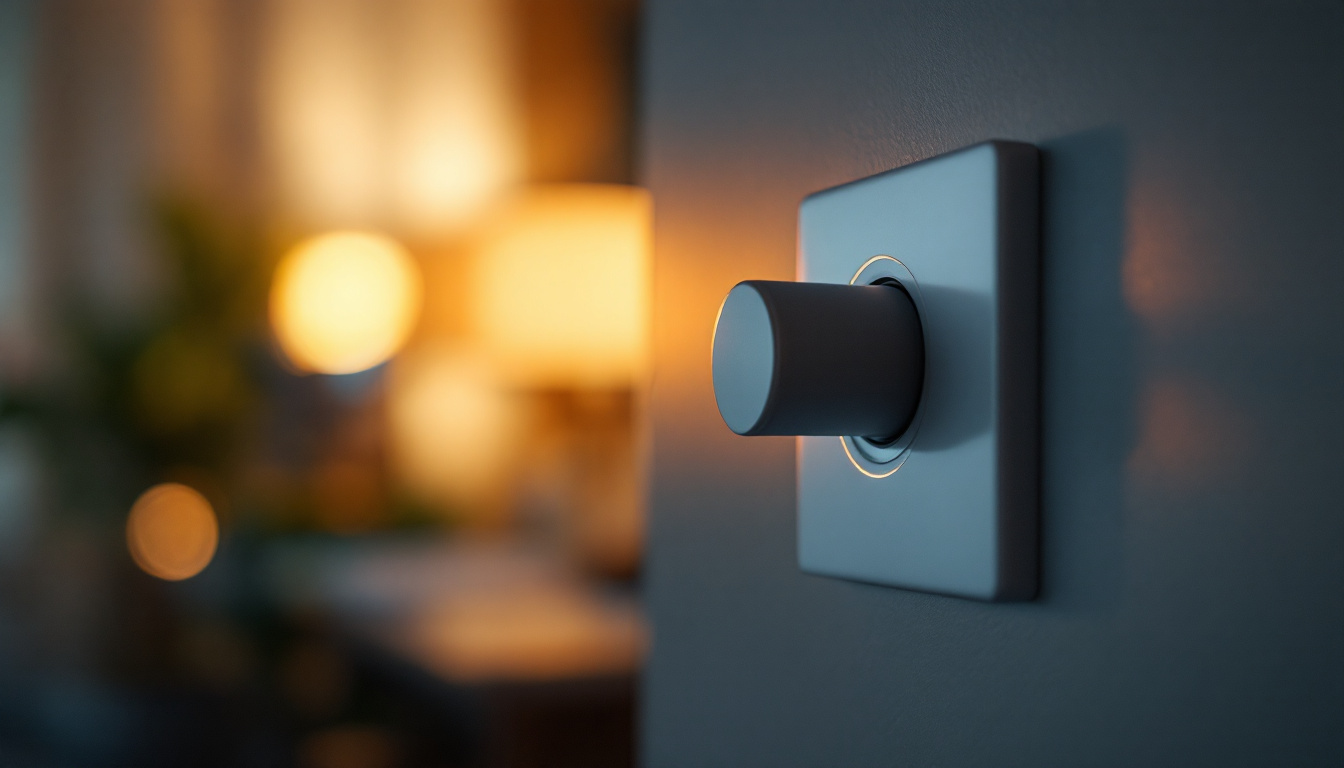
Lighting a car garage is a specialized task that goes beyond simply illuminating a space. For lighting contractors, mastering garage lighting requires a deep understanding of the environment’s unique demands. Car garages serve multiple purposes—from vehicle maintenance and detailing to storage and display—each with distinct lighting requirements.
One of the primary challenges is balancing brightness with clarity. Mechanics and detailers need crisp, shadow-free lighting to inspect vehicles accurately, detect imperfections, and perform repairs safely. Meanwhile, garage owners often want an inviting atmosphere that highlights their vehicles without causing glare or harsh reflections.
Additionally, garages often have limited natural light, making artificial lighting the sole source of illumination. This means contractors must design lighting systems that provide consistent, high-quality light throughout the day and night, regardless of external conditions. The choice of light color temperature also plays a crucial role; cooler temperatures can enhance visibility for detailed work, while warmer tones can create a more welcoming environment for showcasing prized vehicles.
Several factors influence the optimal lighting design for car garages:
Moreover, the integration of smart lighting technology is becoming increasingly popular in garage design. This innovation allows for customizable lighting scenarios that can be adjusted based on the task at hand, whether it’s a full illumination for a detailed inspection or a softer glow for a casual showcase of a classic car. Smart systems can also include motion sensors to enhance energy efficiency, ensuring lights are only on when the space is in use. The ability to control lighting remotely via smartphone applications adds a layer of convenience, allowing garage owners to create the perfect ambiance with just a few taps.
Another consideration is the aesthetic aspect of garage lighting. Many car enthusiasts view their garages as extensions of their homes, often investing in high-end finishes and stylish fixtures that complement their vehicles. Choosing fixtures that not only serve a functional purpose but also align with the overall design theme can elevate the garage from a mere workspace to a sophisticated environment. From sleek LED strips that outline a car’s silhouette to vintage-inspired pendant lights that add character, the options for creating a visually appealing space are virtually limitless.
Lighting contractors must be well-versed in the latest lighting technologies to deliver optimal solutions for car garages. The choice of lighting technology significantly impacts the quality, efficiency, and longevity of the lighting system.
LED (Light Emitting Diode) technology has become the preferred choice for garage lighting due to its numerous advantages. LEDs offer high luminous efficacy, meaning they produce more light per watt of energy consumed compared to traditional lighting options. This efficiency translates into lower energy bills and reduced environmental impact.
Moreover, LEDs provide excellent color rendering, with Color Rendering Index (CRI) values often above 80, and some models exceeding 90. This high CRI is crucial in garages where accurate color perception is necessary for tasks like paint matching and quality inspections.
LED fixtures also have a long lifespan, often exceeding 50,000 hours, reducing maintenance frequency and costs. Their durability and resistance to shock and vibration make them well-suited for the garage environment. Additionally, the versatility of LED designs allows for various installation options, including recessed, surface-mounted, and pendant fixtures, enabling contractors to tailor lighting layouts to the specific needs of the space.
Furthermore, many LED systems now come equipped with smart technology features, such as motion sensors and dimming capabilities, which can enhance energy savings and provide customizable lighting solutions. These advancements not only improve functionality but also contribute to a more user-friendly environment, allowing garage owners to adjust lighting based on their activities, whether it’s working on a vehicle or simply storing items.
While LEDs dominate the market, fluorescent and High-Intensity Discharge (HID) lighting still have niche applications. Fluorescent tubes can provide broad, even lighting and are sometimes used in older garages or for budget-conscious projects. However, they generally have shorter lifespans and lower energy efficiency compared to LEDs.
HID lamps, such as metal halide or high-pressure sodium, offer intense brightness and are sometimes used in large commercial garages or outdoor areas. However, they require warm-up time, have lower color rendering, and consume more energy, making them less favorable for modern garage lighting. In addition, the maintenance of HID fixtures can be cumbersome, as they often require specialized equipment for bulb replacement and disposal, which can add to overall operational costs.
It’s also worth noting that the environmental impact of fluorescent lighting should be considered, as these bulbs contain small amounts of mercury, necessitating careful disposal to prevent contamination. As garage owners become more environmentally conscious, the shift towards more sustainable lighting solutions is likely to continue, further solidifying LEDs as the go-to choice. In some cases, hybrid systems that combine different lighting technologies can be employed to maximize efficiency while addressing specific lighting needs, ensuring that every corner of the garage is illuminated effectively.
Lighting contractors must carefully plan fixture placement and layering to achieve optimal illumination in car garages. A well-designed lighting layout enhances visibility, reduces eye strain, and creates an aesthetically pleasing environment.
Successful garage lighting employs a layered approach, combining ambient, task, and accent lighting:
Proper fixture placement is critical to avoid shadows and glare. For example, overhead lights should be evenly spaced to provide uniform illumination without dark spots. In garages with multiple vehicle bays, each bay should have dedicated lighting to ensure consistent brightness.
Contractors should also consider the mounting height and beam angle of fixtures. Narrow beam angles concentrate light on specific areas, ideal for task lighting, while wider angles provide broader coverage for ambient lighting.
Glare and reflections can hinder visibility and cause discomfort. To minimize these issues, contractors can use fixtures with diffusers or lenses that soften light output. Positioning lights to avoid direct reflection off vehicle surfaces is also essential.
Incorporating advanced controls and smart technology can significantly enhance garage lighting performance and user experience.
Motion sensors help conserve energy by turning lights on only when the garage is in use. Occupancy controls can automatically adjust lighting levels based on activity, ensuring that areas are well-lit during work and dimmed or off when unoccupied.
Dimmable lighting systems allow users to adjust brightness levels according to task requirements or time of day. Scene control systems enable pre-programmed lighting settings, such as bright illumination for repairs and softer lighting for vehicle display.
For larger commercial garages, integrating lighting with BMS provides centralized control, scheduling, and monitoring. This integration helps optimize energy use, track maintenance needs, and enhance security through coordinated lighting strategies.
Lighting contractors must also ensure that garage lighting installations comply with relevant codes and standards to guarantee safety and performance.
Standards such as those from the Illuminating Engineering Society (IES) provide recommendations for lighting levels, uniformity, and color rendering specific to automotive workspaces. Additionally, local building codes may impose requirements on fixture types, wiring, and emergency lighting.
Garages must include emergency lighting and clearly marked exit signs to ensure safe evacuation during power outages or emergencies. Contractors should select fixtures with battery backup and ensure proper placement according to code.
Proper installation techniques, including grounding, wiring protection, and fixture mounting, are vital to prevent electrical hazards. Lighting contractors should follow manufacturer guidelines and industry best practices to ensure reliable and safe operation.
Maintaining garage lighting systems is essential to preserve performance and extend fixture lifespan.
Dust, grease, and grime can accumulate on fixtures, reducing light output. Scheduled cleaning and inspection help identify damaged or malfunctioning components early, preventing costly repairs.
Selecting fixtures with modular designs allows for easy replacement of parts such as LED drivers or lenses, minimizing downtime. Contractors should also recommend products with robust housings suitable for the garage environment.
As lighting technology evolves, contractors should advise clients on potential upgrades, such as integrating newer LED models or smart controls. Retrofitting existing systems can improve energy efficiency and lighting quality without complete replacement.
For lighting contractors, mastering car garage lighting is a blend of technical knowledge, design skill, and practical experience. Understanding the unique requirements of garage environments, selecting appropriate technologies, designing effective layouts, and incorporating smart controls are all critical to delivering superior lighting solutions.
By adhering to safety standards, focusing on energy efficiency, and planning for long-term maintenance, contractors can create lighting systems that enhance both functionality and aesthetics. Ultimately, well-executed garage lighting not only improves work quality and safety but also elevates the overall user experience, making it a valuable specialty within the lighting industry.
Ready to take your car garage lighting projects to the next level? LumenWholesale is here to support you with an extensive selection of spec-grade lighting products at unbeatable wholesale prices. Say goodbye to middleman markups and hello to superior lighting that meets the highest industry standards. With free shipping on bulk orders, you can trust that you’re getting premium lighting at the best value — without any hidden fees. Elevate your lighting installations with the quality, affordability, and convenience that only LumenWholesale can offer. Start browsing our collection today and experience the difference for yourself. Wholesale Lighting at the Best Value.

Discover the key advantages of using fluorescent light fixture diffusers in your projects.

Discover how dusk to dawn outdoor solar lights can revolutionize your lighting installation projects.

Discover essential insights into track lighting systems with our comprehensive guide tailored for lighting contractors.

Discover the inner workings of dimmer switches with insights from lighting contractors.